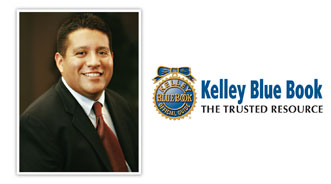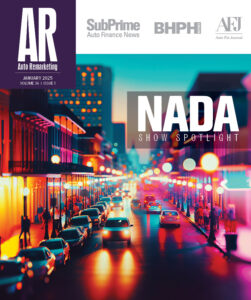KBB to Report Weekly Used Values for 50 States, DC

Announcing an upgrade to its used-vehicle value data, Kelley Blue Book is now breaking that data down regionally, offering specific used value data for each of the 50 states and Washington, D.C.
And while consumers and single-point dealerships may not notice a huge difference, the state-by-state breakdown of used values will be extremely beneficial to large dealership groups and remarketers, KBB director of vehicle valuation Juan Flores told Auto Remarketing in an interview on Wednesday afternoon.
“From a single-point dealer’s standpoint, there isn’t going to be a significant impact. Because a dealer who has consumers visiting his or her dealership from the local area, there isn’t going to be much variation because we’re setting values at the state level,” he explained.
“Now when you’re talking about dealer groups, like your top 10 dealer groups, and they’re able to trade between dealerships across state borders, they’re going to be able to better determine the value of those assets as they’re trading them in between the dealerships,” Flores continued.
He added that the average consumer — unless moving from one state to another — may not notice much of a change.
“This is really more for your national remarketing managers that are dealing with large corporate accounts as they distribute vehicles and dispose of vehicles across the United States. They will be able to leverage these insights and use it as a guide to validate what it is they’re seeing in their internal reporting,” Flores continued.
“When a national remarketing manager looks to ship vehicles across the country or a neighboring state, what they’re doing, most of the time, is leveraging their own internal data sources,” he continued. “And what this allows them to do is … validate that they’re getting the best money for those vehicles as they dispose of them across state lines. It’s third-party, objective input to further support a lot of the internal processes of the rental-car agencies, of finance institutions that dispose of their lease returns, and the remarketing managers for a lot of the manufacturers.”
Looking at individual states, most of the used value variances — which typically range from $100–200 on average — are caused by economic demographics of the particular state, although other factors do come into play, Flores noted. So for instance, a given used model in a state with a sluggish economy may have a lower value that same used car in a more economically affluent state.
“At the end of the day, your Lexus brands, they’re going to bring a significant premium in the much more affluent states,” he said, giving one example. “Previously we muted out the effects (of a state’s economic demographic) because they were outweighed by some of the lower-performing states. We’re essentially no longer dealing with that muted effect. We actually can allow the true effect at the state level to occur.”
In addition to regionalizing its used vehicle values, KBB has also added a new condition category: “Very Good,” which will be between “Excellent” and “Good.”
“Only 3 percent of today’s vehicles are actually in ‘Excellent’ condition,” said Flores. “Kelley Blue Book’s introduction of the ‘Very Good’ condition allows both consumers and dealers to determine a more accurate reflection of a vehicle’s actual condition when a car is in better than ‘Good’ condition, but not quite ‘Excellent.’”

 View The Latest Edition
View The Latest Edition

